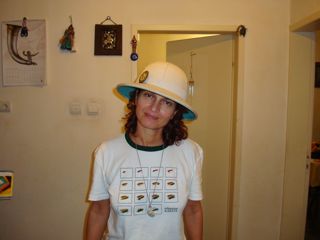Photos - personal archive of Diana Dimitrova and Ministry of Culture of Greece
Maria S. Topalova
The excavations in Amphipolis continue at a rapid pace and archaeologists are currently preparing the site for the winter, protecting it from the vagaries of weather. Everyone is holding their breath in anticipation of the new revelations about the deceased person to whom the impressive tomb belongs. Whatever his name, he was a very influential person in the ancient Macedonian state. A very important neighbour of the Macedonians who lived at the time to which the tomb in Amphipolis dates back was Odrysian king Seuthes III. 2014 marks the 10th anniversary of the discovery of the tomb of the ruler who was a difficult neighbour to the north and a rival of the successors to Alexander the Great.  GRReporter contacted archaeologist Diana Dimitrova, a member of the research team led by Dr. Georgi Kitov that discovered the tomb of Seuthes III. We asked her to take us back to the centuries of that legendary rivalry that surely has been transferred to the tombs of the rulers.
GRReporter contacted archaeologist Diana Dimitrova, a member of the research team led by Dr. Georgi Kitov that discovered the tomb of Seuthes III. We asked her to take us back to the centuries of that legendary rivalry that surely has been transferred to the tombs of the rulers.
- Mrs. Dimitrova, what distinguishes the style of the tomb of Seuthes III and the Thracian tombs in general from those in the ancient Macedonian state, including the one in Amphipolis that dates back to the same historical period, namely the second half of the 4th century BC?
- The tomb in Amphipolis is not yet completely explored but what is seen on the Internet shows that it has a semi-cylindrical vault, similar to the vault of the tombs in the ancient Macedonian state whereas the first chamber of Golyamata Kosmatka (the tomb of Seuthes III) has a cantilevered arched vault, which is a transition between the flat roof and the arched roof but before achieving the perfect semi-cylindrical shape that we see in Amphipolis, at least in the photos on the Internet. The second chamber of Golyamata Kosmatka, the round one, has a dome-shaped roof. This form is known from Mycenae and Thrace. I mean the wider Thracian land, not only today’s Bulgaria but also northwestern Turkey, northwestern Asia Minor - every place where the Thracian tribes had settled. There are quite a few differences but it is still early to draw analogies between Amphipolis and Golyamata Kosmatka. In all cases, the architecture is different and probably the grave in Amphipolis does not belong to just anybody.